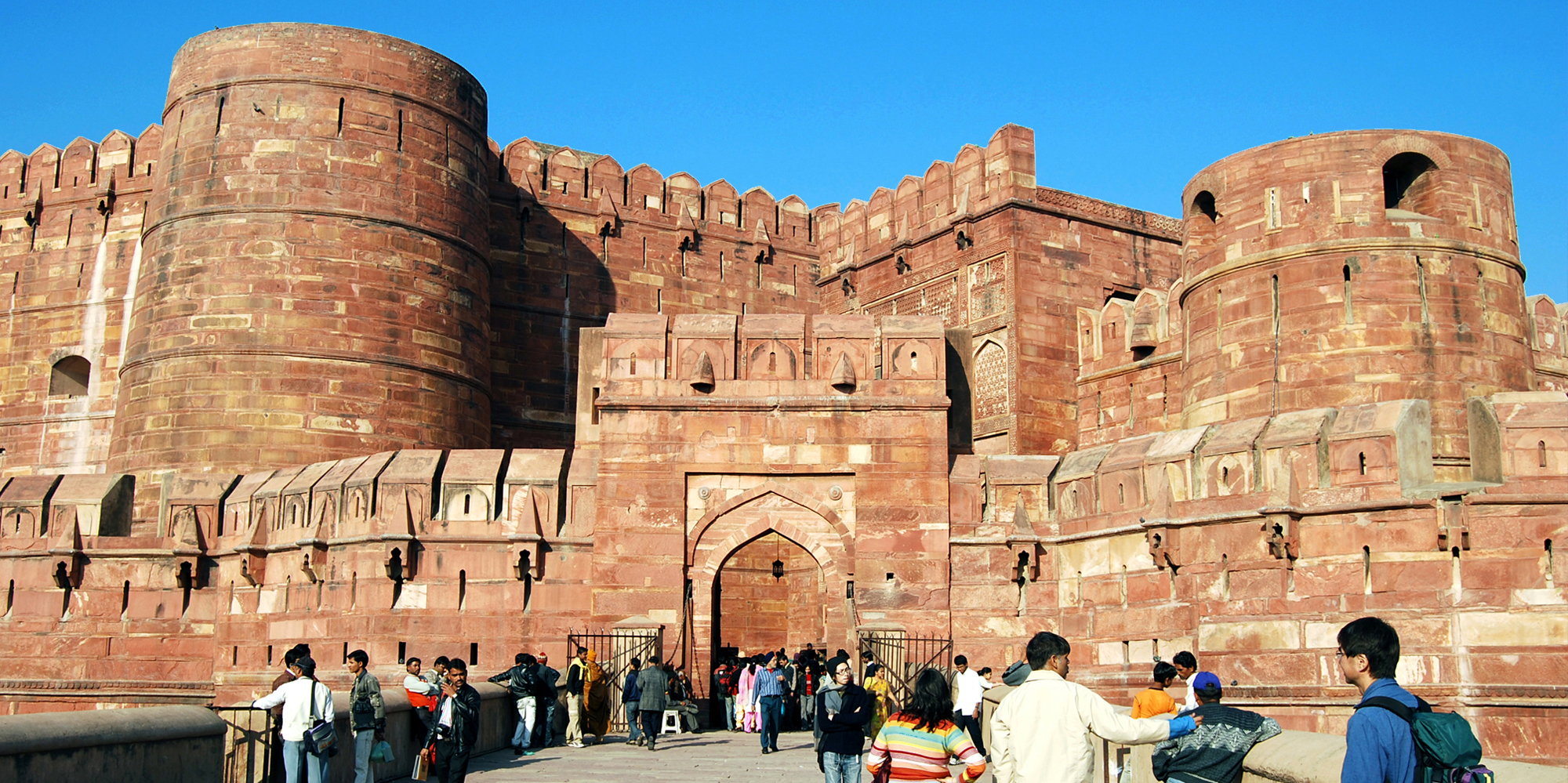Agra Fort Travel Information
The first red sandstone fort of North India was built in 1565 by India’s greatest Mughal ruler, Emperor Akbar. Its royal audience halls, immense stone courtyards, marble mosque and private royal chambers give us a glimpse of the grandeur of the Mughal Empire. The monumental Delhi Gate, which faces the city on the western side of the fort, is considered the grandest of the four gates and a masterpiece of Akbar's time. It was built circa 1568 both to enhance security and as the king's formal gate, and includes features related to both. It is embellished with inlay work in white marble. A wooden drawbridge was used to cross the moat and reach the gate from the mainland; inside, an inner gateway called Hathi Pol (Elephant Gate)-guarded by two life-sized stone elephants with their riders-added another layer of security. The drawbridge, slight ascent, and 90-degree turn between the outer and inner gates make the entrance impregnable. During a siege, attackers would employ elephants to crush a fort's gates. But without a level, straight run-up to gather speed, elephants are ineffective. Because the Indian military is still using the northern portion of the Agra Fort, the Delhi Gate cannot be used by the public. Tourists enter via the Amar Singh Gate. The gate is similar in design to the Delhi Gate, and both are built of red sandstone.

The site is very important in terms of architectural history. Abul Fazal recorded that five hundred buildings in the beautiful designs of Bengal and Gujarat were built in the fort. Some of them were demolished by Shah Jahan to make way for his white marble palaces. Most of the others were destroyed by the British between 1803 and 1862. Only thirty Mughal buildings have survived on the south-eastern side, facing the river. Of these, the Delhi Gate, Amar Singh Gate and one palace-Bengali Mahal-are representative Akbari buildings. The Bengali Mahal is built of red sandstone and is now split into Akbari Mahal and Jahangiri Mahal. Some of the most historically interesting mixes of Hindu and Islamic architecture are found here. In fact, some of the Islamic decorations feature forbidden images of living creatures-dragons, elephants and birds, instead of the usual patterns and calligraphy seen in Islamic surface decoration.
View All World Heritage Sites in India
View All Sights of Agra
Sights Main Menu >>

